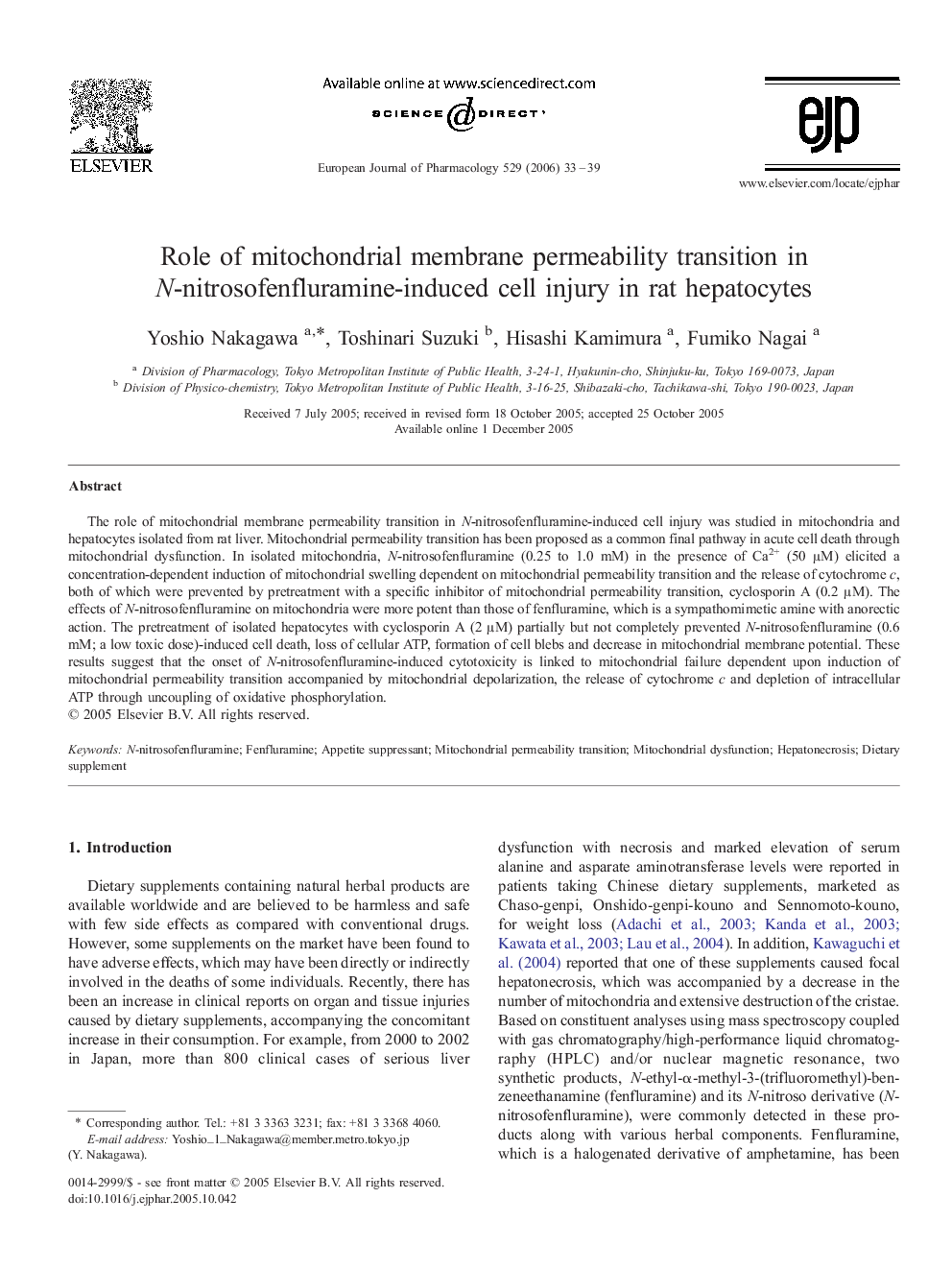| Article ID | Journal | Published Year | Pages | File Type |
|---|---|---|---|---|
| 2537580 | European Journal of Pharmacology | 2006 | 7 Pages |
The role of mitochondrial membrane permeability transition in N-nitrosofenfluramine-induced cell injury was studied in mitochondria and hepatocytes isolated from rat liver. Mitochondrial permeability transition has been proposed as a common final pathway in acute cell death through mitochondrial dysfunction. In isolated mitochondria, N-nitrosofenfluramine (0.25 to 1.0 mM) in the presence of Ca2+ (50 μM) elicited a concentration-dependent induction of mitochondrial swelling dependent on mitochondrial permeability transition and the release of cytochrome c, both of which were prevented by pretreatment with a specific inhibitor of mitochondrial permeability transition, cyclosporin A (0.2 μM). The effects of N-nitrosofenfluramine on mitochondria were more potent than those of fenfluramine, which is a sympathomimetic amine with anorectic action. The pretreatment of isolated hepatocytes with cyclosporin A (2 μM) partially but not completely prevented N-nitrosofenfluramine (0.6 mM; a low toxic dose)-induced cell death, loss of cellular ATP, formation of cell blebs and decrease in mitochondrial membrane potential. These results suggest that the onset of N-nitrosofenfluramine-induced cytotoxicity is linked to mitochondrial failure dependent upon induction of mitochondrial permeability transition accompanied by mitochondrial depolarization, the release of cytochrome c and depletion of intracellular ATP through uncoupling of oxidative phosphorylation.
